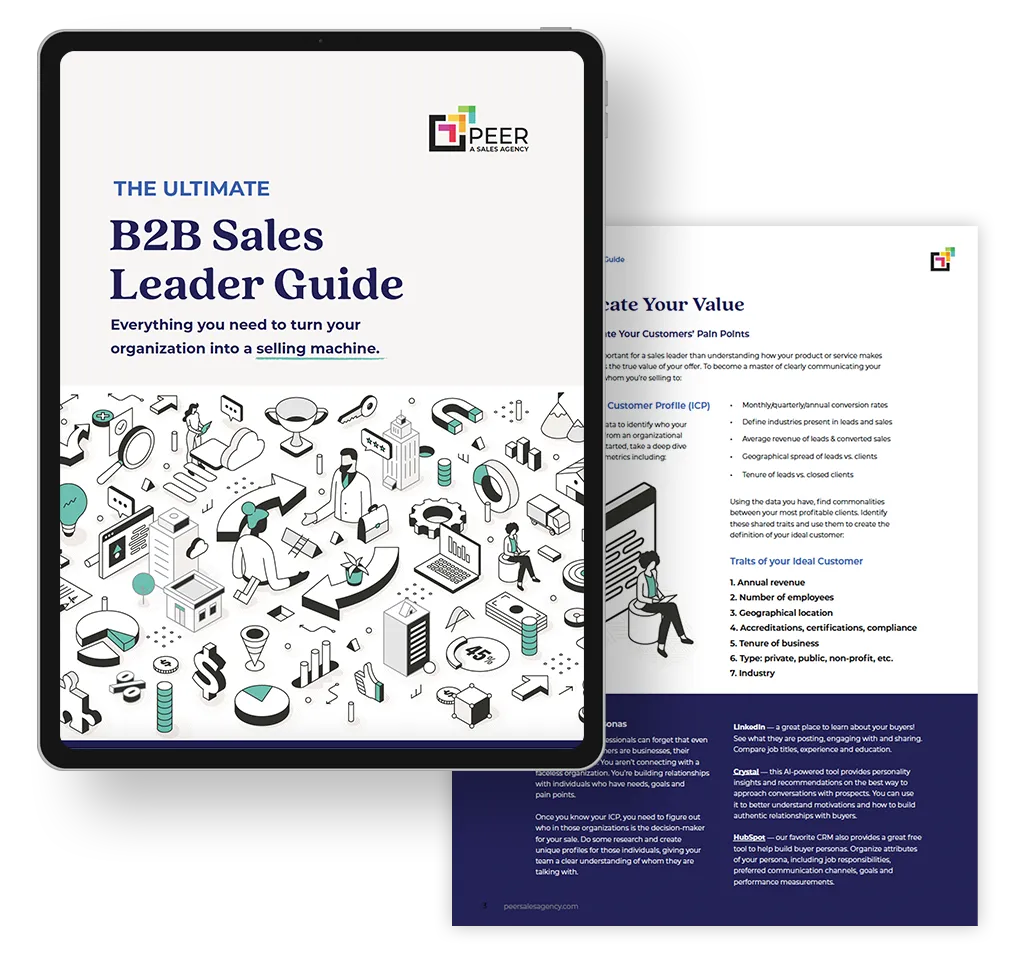Writing is hard. But, it is a skill that is very necessary if you want to generate leads online. Content is what attracts visitors to your website when they are searching for solutions. You want to provide those solutions to your prospective customers — that’s where blogs and lead magnets come in.
Why write content?
If you’re in charge of a sales team for your organization or if you’re responsible for getting new leads for your sales team, content can play a key role in generating leads online. Put simply, content marketing uses content (usually blogs) to attract visitors to your site, where you then convert them to leads using a lead magnet (a.k.a. content offer).
You don’t have to be a professional writer to write great content that resonates with your audience. You just have to understand your customer.
Tip: In a previous article, we discussed the first steps of how to create a lead magnet. That’s a great place to start if you’re new to using content to generate leads.
Many of our customers have asked, “Why do we need to write blog posts to get new leads?” The way prospects buy is different today than it was 5 years ago. Here are 3 statistics from Hubspot that illustrate this point very well:
- 96% of B2B buyers want more content with more input from industry thought leaders
- Only 29% of buyers want to talk with a salesperson to learn more about a product
- 47% of buyers viewed 3-5 pieces of content before engaging with a sales rep
If your company’s last blog article was written years ago, chances are good that prospective buyers aren’t looking to you for the information they need. And, they could be getting answers from a competitor. If your competitor is being helpful and providing information to a prospect, then that competitor will be top-of-mind when that prospect is ready to buy.
Wouldn’t you rather that be you?
Make a plan and stick to it.
Before you jump into writing your lead magnet, start with an outline (see our tips for outlining your lead magnet). Don’t skip that part! There are lots of valuable questions to answer that will make writing your content a lot easier.
There are three main sections to all good lead magnets:
- Introduction: Talk about the problem.
- Meat of your article: How to solve the problem.
- Wrap up: What does success look like now that the problem is solved?
So, let’s break down each step and show you how to write your lead magnet.
Key Takeaway #1: Talk about the problem.
An introduction should quickly help your reader (a.k.a. Prospective customer) see themselves in the story. Spend a few sentences talking about the problem your audience has and why they should care about this content.
Here are a few ideas to get you thinking about their problem:
- Are there objections you’ve faced in sales conversations related to their problems?
- What are their goals for the company/department?
- What hurdles or issues exist that would prevent them from achieving these goals?
- What solutions have they tried to fix this problem themselves?
Here’s an example from a popular consumer product out in the market:
Product: Hello Fresh, pre-packed, home delivery meals
Article: Meal prep planning for families
Problem: Busy families don’t have time to come home, plan a meal and spend 60 minutes preparing it, so they end up eating unhealthy foods from drive-thru windows.
Introduction: Imagine you’ve come home after a busy day at work and you have an hour to get your kids fed before one of them has to be at baseball practice and the other has to be at gymnastics. You go to the refrigerator only to realize that you don’t have the ingredients you need to make something healthy. So, you grab your purse and keys and tell the kids to jump in the car. I guess it’ll be burgers from a drive-thru again! What if I told you there was a better way to feed your family and feel good about the meals you’re giving them?
See how that introduction brings the problem to life in a way that is easy for their target audience to relate to? Now, you give it a try. Take 10 minutes to write your introduction. Remember, it doesn’t have to be perfect. Just just something down and you can refine later. Get typing. It’s ok… I’ll wait.
Key Takeaway #2: How do you solve the problem?
In the meat of your content (or podcast or video) you should guide your audience step-by-step in solving their problem.
Wait? Am I giving away the ‘secret sauce’?
Many of my customers are worried that if they spell out the “secret sauce” of their product or offering, that customers will just read the article and do it themselves.
Well, they could do it on their own. But, it’s unlikely. Think of how many cooking shows you’ve watched. Now, how many times have you made that gourmet meal or 3-tiered cake for yourself?
Most prospective customers are looking for someone to solve their problem for them. Content helps provide them with the validation they are looking for–it helps build trust. They want to be reassured that you know what you’re talking about.
By outlining solutions in free content, you are giving prospective customers an opportunity to see how you would solve the problem before they make a commitment. You are demonstrating your expertise and showing them that you genuinely care about helping.
And, even if they can solve the problem on their own with your guide, there may come a time when they have grown beyond doing it themselves. You’ll be top-of-mind. Since you’ve shown them you are a thought leader, you are better positioned to be their go-to solution.
Ok, now that you understand why, let’s talk about the how.
Make it easy on ’em
The meat of your content should solve your audience’s problem in easy-to-follow steps. Make our section headings clear and use bullet points. Make it easy to scan and find the information they need.
You’ll notice in this post that I call out Key Takeaways and use lists of questions and steps to help guide readers through the process. Translating difficult processes and solutions into easy to understand steps makes things easier for your audience to skim and absorb your content.
Did you know that 43% of people admit to skimming blogs? Make your content easy to skim and your audience will love you!
Tips for writing the meat of your content:
- Use headlines that help identify key takeaways or ideas.
- Use lists of questions or steps to outline how to solve the problem.
- Keep It Simple Stupid – translate your process or solution into easy to understand language.
- Make the meat of your content easy to skim with bullets.
My top pick: I really love Amy Porterfield! She is a digital marketing expert and an amazing storyteller. She’s also great at walking her podcast listeners through the step-by-step process of solving their problems. If you are looking for great examples of how to achieve a readable piece of content, head over to her blog and check out one of her podcast episode write-ups.
Key Takeaway #3: What does success look like?
As you wrap-up your content, it’s important to illustrate what your audience should expect when they follow your plan. Humans need motivation to do anything. We don’t choose to eat better, exercise, read more or save money unless there is some motivating factor that gets us off the couch!
Give your audience an opportunity to see a better version of themselves or their business. Help them see that it’s possible and that they are destined for better things. Paint a picture of what life looks like when the problem is solved.
How will your audience benefit if they follow the steps you outlined? Will they:
- Save time or increase productivity through efficiency gains
- Reduce waste or increase revenue
- Reach their goals quicker or with more ease
- Gain a competitive advantage
What a difference 5 hours can make
I was once like you. I knew that I needed to create content in order to show our prospective customers that I could help them create a consistent stream of leads and close more deals.
But, do you think I did anything about that for the first year of my business? No! I was not practicing what I preach. I was busy creating lead generating content for clients not for our own business.
When I saw the results our clients were seeing (a 200% increase in leads or a 500% increase in organic search traffic), it hit me: If I spent 5 hours a week creating content for our audience, I could experience the same kind of results.
How much time do you spend cruising through LinkedIn or trolling Facebook and Google for new leads? I know I used to spend more than 5 hours a week scrolling. Wouldn’t that 5 hours be better spent making an impact on your business?
Show off your industry thought leadership. Give your prospects confidence in your abilities to help them solve their problem. That’s what drives lead generation for successful software companies.
If you can’t create your own content, contact us to learn more about how we help small and mid-size technology companies use content to generate leads and close deals.



